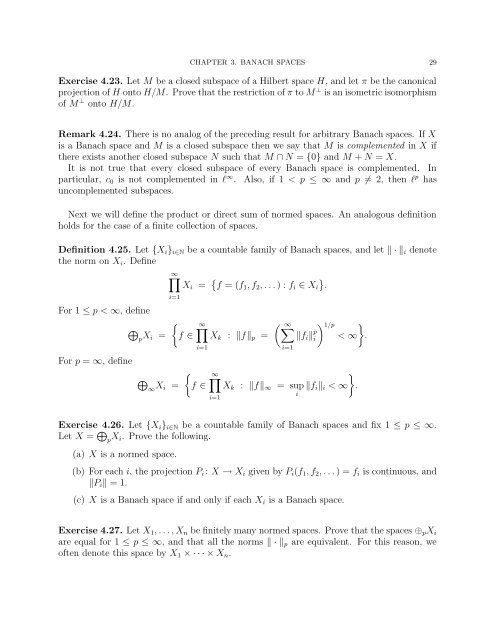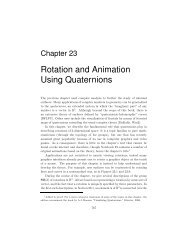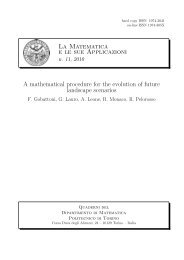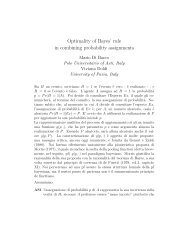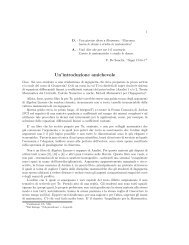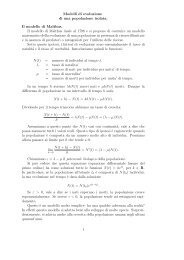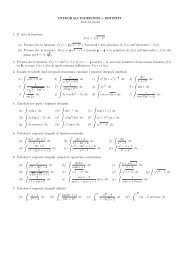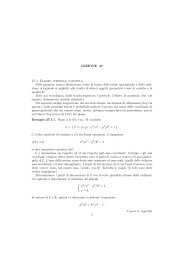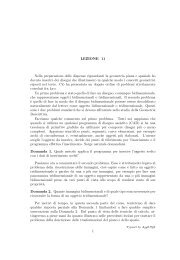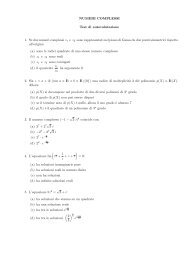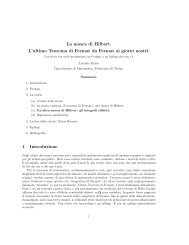FUNCTIONAL ANALYSIS LECTURE NOTES CHAPTER 3. BANACH ...
FUNCTIONAL ANALYSIS LECTURE NOTES CHAPTER 3. BANACH ...
FUNCTIONAL ANALYSIS LECTURE NOTES CHAPTER 3. BANACH ...
Create successful ePaper yourself
Turn your PDF publications into a flip-book with our unique Google optimized e-Paper software.
<strong>CHAPTER</strong> <strong>3.</strong> <strong>BANACH</strong> SPACES 29<br />
Exercise 4.2<strong>3.</strong> Let M be a closed subspace of a Hilbert space H, and let π be the canonical<br />
projection of H onto H/M. Prove that the restriction of π to M ⊥ is an isometric isomorphism<br />
of M ⊥ onto H/M.<br />
Remark 4.24. There is no analog of the preceding result for arbitrary Banach spaces. If X<br />
is a Banach space and M is a closed subspace then we say that M is complemented in X if<br />
there exists another closed subspace N such that M ∩ N = {0} and M + N = X.<br />
It is not true that every closed subspace of every Banach space is complemented. In<br />
particular, c0 is not complemented in ℓ ∞ . Also, if 1 < p ≤ ∞ and p = 2, then ℓ p has<br />
uncomplemented subspaces.<br />
Next we will define the product or direct sum of normed spaces. An analogous definition<br />
holds for the case of a finite collection of spaces.<br />
Definition 4.25. Let {Xi}i∈N be a countable family of Banach spaces, and let · i denote<br />
the norm on Xi. Define<br />
For 1 ≤ p < ∞, define<br />
For p = ∞, define<br />
<br />
p Xi =<br />
∞<br />
i=1<br />
<br />
∞ Xi =<br />
Xi = <br />
f = (f1, f2, . . . ) : fi ∈ Xi .<br />
<br />
f ∈<br />
∞<br />
Xk : fp =<br />
i=1<br />
<br />
f ∈<br />
∞<br />
i=1<br />
∞ <br />
i=1<br />
fi p<br />
1/p <br />
i < ∞ .<br />
Xk : f∞ = sup fii < ∞<br />
i<br />
<br />
.<br />
Exercise 4.26. Let {Xi}i∈N be a countable family of Banach spaces and fix 1 ≤ p ≤ ∞.<br />
Let X = <br />
p Xi. Prove the following.<br />
(a) X is a normed space.<br />
(b) For each i, the projection Pi : X → Xi given by Pi(f1, f2, . . . ) = fi is continuous, and<br />
Pi = 1.<br />
(c) X is a Banach space if and only if each Xi is a Banach space.<br />
Exercise 4.27. Let X1, . . . , Xn be finitely many normed spaces. Prove that the spaces ⊕pXi<br />
are equal for 1 ≤ p ≤ ∞, and that all the norms · p are equivalent. For this reason, we<br />
often denote this space by X1 × · · · × Xn.


